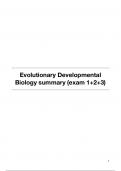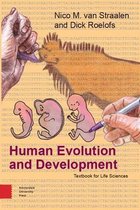Summary
Summary Evolutionary Developmental Biology (AB_1141) partial exam 1+2+3
- Course
- Institution
- Book
Complete summary of the course Evolutionary Developmental Biology (AB_1141) from the 1st year of biomedical sciences, VU Amsterdam. This summary contains all the information needed for partial exam 1, 2 and 3, and includes all the material from the lectures and the book that was required for this c...
[Show more]




